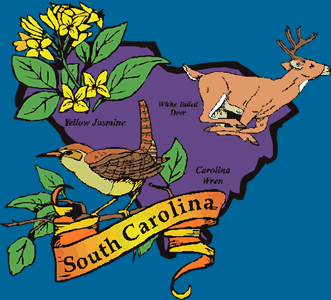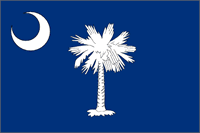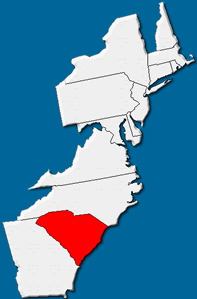 History:
In 1520, Spanish explorer Lucas Vasquez Ayllon explored the area near Pawley's Island. The group took about 140 Native Americans as slaves including one man they named Francisco Chicora. Chicora was taken to Spain and taught Spanish. In 1523, he was brought back to the area to assist in establishing a colony, but escaped soon after his arrival. Following exploration of the coast in 1521 by Francisco de Gordillo, the Spanish tried unsuccessfully to establish a colony near present-day Georgetown in 1526. The French also failed to colonize Parris Island near Fort Royal in 1562 with the assistance of the Cusabo Indians.
On March 24, 1663, Charles II granted to the Lords Proprietors a slice of North America running from the Atlantic to the Pacific, lying between 36 degrees north latitude on the north and 31 degrees on the south. This huge section of continent was granted absolutely to the following men, to be financed by them, and for them to profit by, and to rule, with the help or interference of such a local government as they might permit. Above them was only the King. In the order named in Charles' charter they were: the Earl of Clarendon, the Duke of Albemarle, Lord Craven, Lord Berkeley, Lord Ashley, Sir George Carteret, Sir William Berkeley and Sir John Colleton. The most important of these was Lord Ashley (Anthony Ashley Cooper), whose secretary, the philosopher John Locke, wrote the Fundamental Constitution of Carolina.
The first English settlement was made in 1670 at Albemarle Point on the Ashley River, but poor conditions drove the settlers to the site of Charleston (originally called Charles Town).
Two years later, the charter was amended to raise the north line 30 minutes and the south line by two degrees. In other words, the huge slice of North America that was Carolina included: the present states of North and South Carolina, Georgia, Tennessee, Alabama, Mississippi, Louisiana and Arkansas, a small part of Missouri, most of Oklahoma, Texas, New Mexico and Arizona, the southern half of California, the southern tip of Nevada, the north part of Florida, and a slice of northern Mexico!
Carolina, named after the British King Charles I, was officially separated into South and North Carolina in 1710. African slaves were brought into the colony in large numbers to provide labor for the plantations, and by 1720 they formed the majority of the population. The port city of Charleston became an important center of commerce and culture. The interior or upcountry, meanwhile, was being slowly settled by small farmers and traders, who pushed the dwindling tribes of Native Americans to the west.
By the time of the American Revolution, South Carolina was one of the richest colonies in America. Its merchants and planters formed a strong governing class, contributing many leaders to the fight for independence. More Revolutionary War battles and skirmishes were fought in South Carolina than any other state, including major engagements at Sullivan's Island, Camden, Kings Mountain , and Cowpens. South Carolina ratified the United States Constitution on May 23, 1788, becoming the eighth state to enter the union.
In the following years the state grew and prospered. With the invention of the cotton gin, cotton became a major crop, particularly in the upcountry. A new capital city, Columbia, was founded in the center of the state. Dissatisfaction with the federal government and its tariff policies grew during this period, however, and by 1860 tensions between the state and the federal government reached a climax. Unhappy over restrictions on free trade and about calls for the abolition of slavery, South Carolina seceded from the union on December 20, 1860, the first of the Southern states to do so. When Confederate troops fired on Fort Sumter in Charleston Harbor on April 12, 1861, the nation plunged into Civil War.
The Civil War and its aftermath were devastating for South Carolina. The state lost nearly one fifth of the white male population, and its economy was shattered. The final blow came in early 1865 when General William T. Sherman marched his troops through South Carolina, burning plantations and most of the city of Columbia. The Reconstruction period that followed the war was marked by general economic, social, and political upheaval. The former white leaders found themselves without money or political power, while the large population of freed slaves sought to improve their economic and political positions. When federal troops were withdrawn in 1877, white conservatives led by Governor Wade Hampton were able to take control of state government once again. The economy continued to suffer in the years that followed, however. Cotton prices were low, and the plantation system that had brought South Carolina such wealth was dead. Populist reforms in the 1890s brought more political power to small white farmers, but African Americans were disenfranchised and increasingly segregated. |









